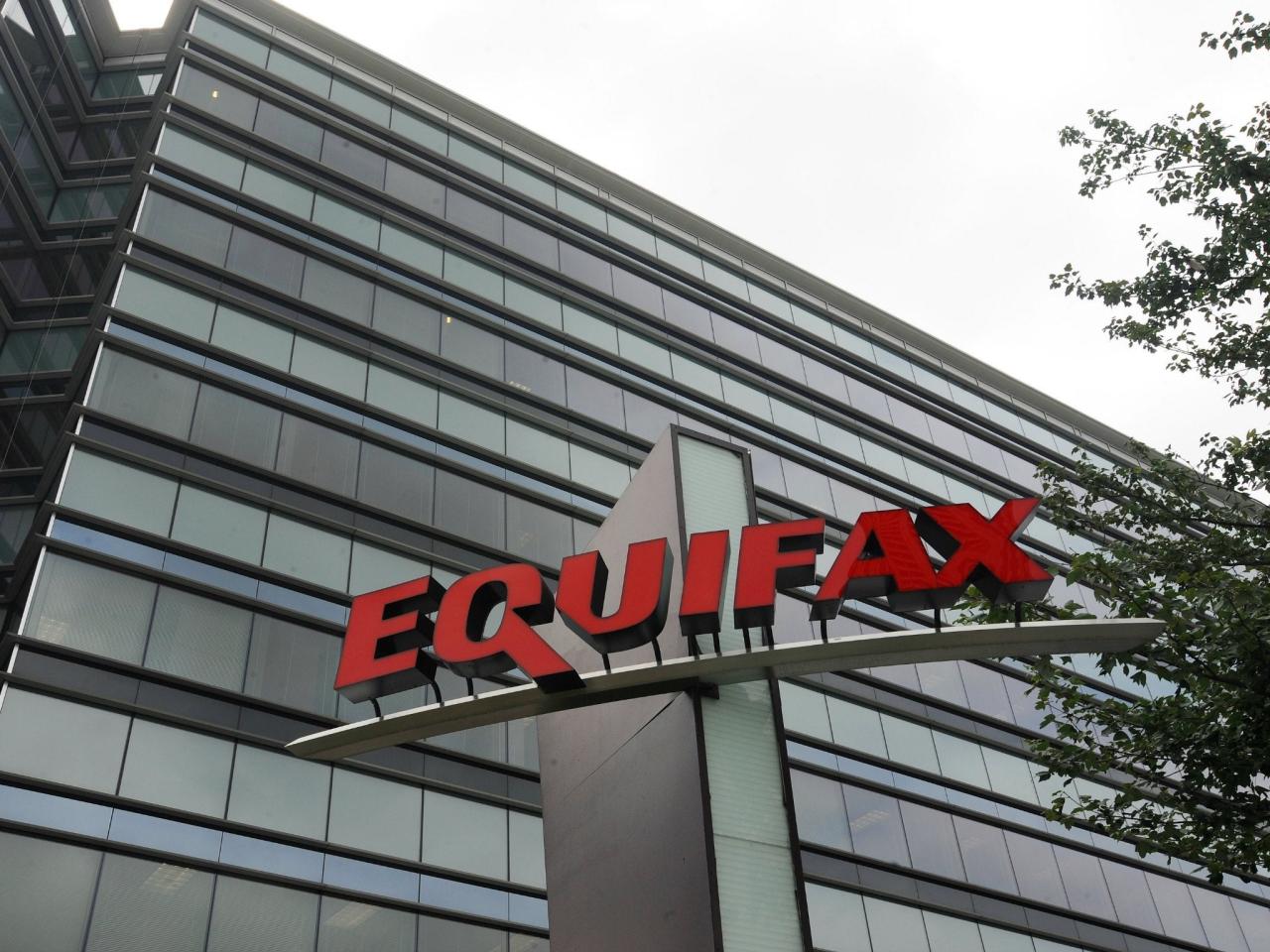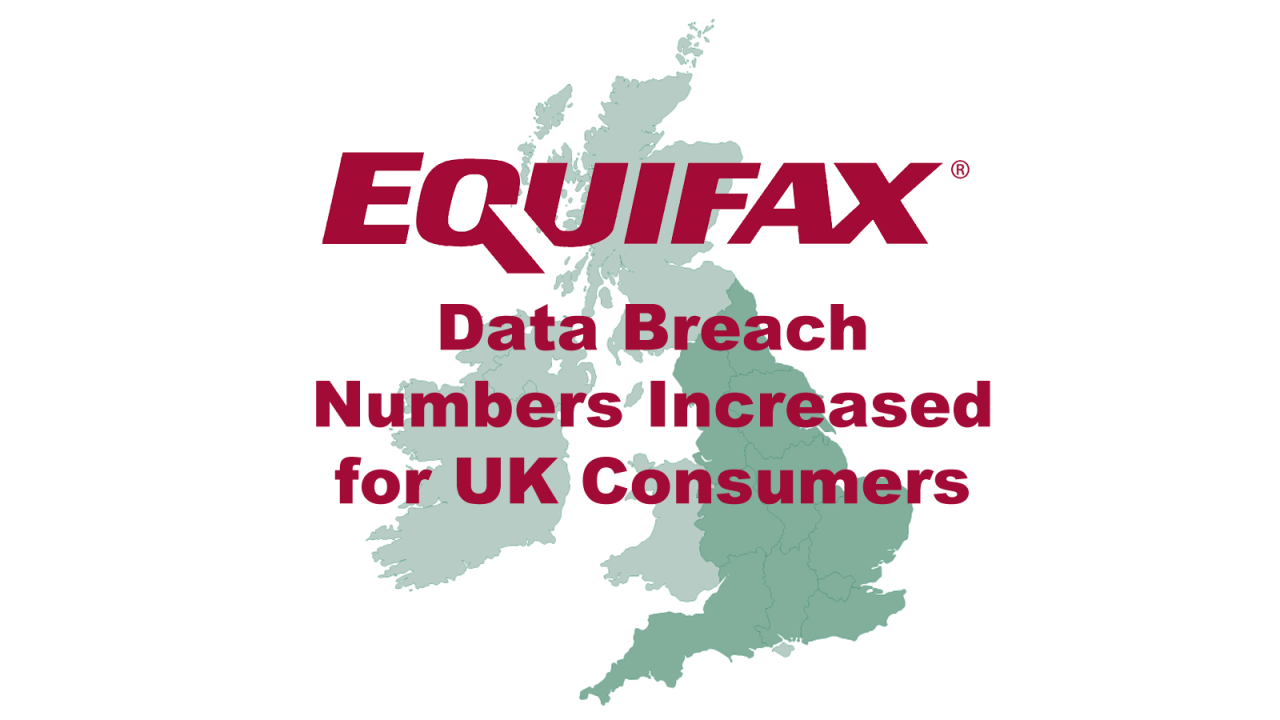
Equifax Cyberattack 143 Million Records Exposed
Cyber attack on Equifax exposes 143 million social security numbers and driving licenses – a headline that sent chills down the spines of millions. This massive data breach wasn’t just a technical glitch; it was a catastrophic failure of security that exposed the deeply personal information of nearly half the US population. We’re diving deep into the details of this infamous hack, exploring the vulnerabilities exploited, the devastating consequences for victims, and the lasting impact on consumer trust and data privacy.
Prepare to be both informed and, frankly, a little unsettled.
The sheer scale of the Equifax breach is staggering. 143 million individuals had their sensitive data compromised, including Social Security numbers, driver’s license information, addresses, and even birth dates. The immediate consequences were devastating: widespread identity theft, financial fraud, and a profound erosion of public trust in Equifax and the credit reporting industry as a whole. This wasn’t just a matter of inconvenience; it was a violation of fundamental privacy rights, leaving millions vulnerable to long-term financial and emotional distress.
The Equifax Data Breach

The 2017 Equifax data breach remains one of the largest and most damaging data breaches in history, significantly impacting the lives of millions of individuals. The sheer scale of the breach and the sensitive nature of the stolen data highlighted critical vulnerabilities in data security practices and the devastating consequences for consumers.
The Scope of the Data Breach
The Equifax breach exposed the personal information of approximately 143 million individuals. This staggering number represents a substantial portion of the US adult population, underscoring the widespread impact of the incident. The breach wasn’t limited to a single type of data; it encompassed a wide range of sensitive personal information, making the consequences particularly severe.
Types of Compromised Data and Associated Risks
The compromised data included a variety of sensitive personal information, significantly increasing the risk of identity theft and financial fraud for affected individuals. The types of data exposed included Social Security numbers, driver’s license numbers, addresses, birth dates, and in some cases, credit card numbers. The combination of this information created a potent tool for malicious actors.
| Data Type | Number of Records Affected (Approximate) | Potential Risks |
|---|---|---|
| Social Security Numbers | 143 million | Identity theft, fraudulent tax returns, opening of fraudulent accounts, loan applications |
| Driver’s License Numbers | 143 million | Identity theft, fraudulent vehicle purchases, obtaining fraudulent licenses |
| Addresses | 143 million | Targeted mail fraud, physical theft, home invasions |
| Birth Dates | 143 million | Identity theft, accessing financial accounts, medical identity theft |
Immediate Consequences for Affected Individuals
The immediate consequences for those affected by the Equifax breach were significant and widespread. Many individuals faced the daunting task of monitoring their credit reports for fraudulent activity, placing credit freezes, and dealing with the emotional distress of a major security breach. The potential for identity theft, resulting in financial losses and damaged credit scores, was a significant concern.
Many victims spent countless hours contacting credit bureaus, banks, and law enforcement agencies to mitigate the damage. The breach also led to numerous lawsuits against Equifax, highlighting the legal ramifications of such data breaches. The long-term consequences, such as difficulty obtaining loans or securing employment, continue to affect many individuals years later.
Vulnerability and Root Cause Analysis
The Equifax data breach, exposing the sensitive personal information of millions, serves as a stark reminder of the critical importance of robust cybersecurity practices. Understanding the vulnerabilities exploited and the root causes of the breach is crucial not only for Equifax but also for all organizations handling sensitive data. A thorough analysis reveals a combination of factors that allowed the attackers to succeed.The attack leveraged a known vulnerability in the Apache Struts framework, a widely used Java-based web application framework.
Specifically, the attackers exploited the CVE-2017-5638 vulnerability, a critical remote code execution (RCE) flaw. This vulnerability allowed attackers to inject malicious code into the Equifax servers, gaining unauthorized access and control. The attackers then used this access to exfiltrate large amounts of data, including Social Security numbers, driver’s license numbers, and other sensitive personal information.
The Equifax breach, exposing 143 million social security numbers and driver’s licenses, highlighted the critical need for robust data security. Building secure applications is paramount, and that’s where understanding the advancements in application development, like those explored in this article on domino app dev the low code and pro code future , becomes crucial. Ultimately, preventing future catastrophes like the Equifax breach requires a focus on secure coding practices from the ground up.
Apache Struts Vulnerability Exploitation
The CVE-2017-5638 vulnerability in Apache Struts allowed attackers to bypass security measures and execute arbitrary code on the Equifax servers. This was achieved by sending a specifically crafted HTTP request that exploited a flaw in how the framework handled user input. Essentially, the attackers were able to inject malicious code into the application, gaining control of the server. This malicious code then allowed them to navigate the file system, locate sensitive data, and exfiltrate it.
The success of this attack highlights the critical need for timely patching and robust vulnerability management systems.
Technical Details of the Attack
The attack involved several steps. First, the attackers identified the vulnerable Apache Struts application running on Equifax’s servers. They then crafted a malicious HTTP request that exploited the CVE-2017-5638 vulnerability. Upon successful exploitation, the attackers gained remote code execution, granting them control of the server. Subsequently, they moved laterally within the Equifax network, gaining access to databases containing sensitive customer information.
Remember the Equifax breach? 143 million social security numbers and driver’s licenses exposed – a truly massive data leak. This highlights the critical need for robust security measures, and understanding tools like bitglass and the rise of cloud security posture management is key to preventing future catastrophes. Proper cloud security is no longer optional; the Equifax breach serves as a stark reminder of the devastating consequences of inadequate protection.
Finally, they exfiltrated the data, likely using techniques to avoid detection and maintain anonymity. The precise methods used for data exfiltration remain partially undisclosed, but it likely involved techniques like data compression, encryption, and the use of covert communication channels.
Best Practices for Patching and Vulnerability Management
The Equifax breach underscores the critical need for proactive patching and robust vulnerability management practices. Organizations should implement a comprehensive vulnerability management program that includes regular vulnerability scanning, penetration testing, and prompt patching of identified vulnerabilities. A strong security information and event management (SIEM) system is also essential for detecting and responding to security incidents. Furthermore, the principle of least privilege should be strictly enforced, limiting user access to only the necessary resources.
Equifax’s failure to patch the known Apache Struts vulnerability in a timely manner demonstrates a critical lapse in these best practices. Had they implemented a robust patching schedule and actively monitored for vulnerabilities, the breach could have been prevented. Regular security awareness training for employees is also crucial to prevent social engineering attacks and other forms of human error that can contribute to security breaches.
Equifax’s Response and Aftermath
The Equifax data breach wasn’t just about the sheer volume of compromised data; it was also a masterclass (albeit a disastrous one) in hownot* to handle a crisis of this magnitude. The company’s response, or rather, lack thereof in the crucial initial stages, significantly exacerbated the damage and fueled public outrage. The ensuing legal battles, financial repercussions, and reputational damage continue to reverberate even years later, serving as a cautionary tale for other organizations about the critical importance of proactive cybersecurity measures and transparent crisis communication.
Equifax’s Response Timeline
Equifax discovered the breach in July 2017, but didn’t publicly announce it until September 7th, a delay that drew significant criticism. This timeline reveals a pattern of slow and inadequate communication. The initial announcement lacked crucial details, further fueling public distrust. The company offered free credit monitoring services, but the sign-up process was cumbersome and riddled with issues, further adding to the negative perception.
The slow rollout of notification to affected individuals added insult to injury, leaving millions vulnerable for an extended period. This lack of transparency and the perceived lack of urgency in their response significantly damaged public confidence.
Legal and Regulatory Repercussions
The Equifax breach triggered a flurry of lawsuits from consumers and government agencies alike. The Federal Trade Commission (FTC) filed a complaint alleging that Equifax failed to adequately protect consumer data, resulting in a $700 million settlement. The company also faced numerous class-action lawsuits, many of which resulted in substantial payouts to affected individuals. State attorneys general also launched investigations and levied fines, adding to the financial burden.
Beyond financial penalties, the breach damaged Equifax’s reputation, leading to a loss of public trust and impacting its business operations. These legal battles highlighted the severe consequences of neglecting data security and the importance of regulatory compliance.
Financial Impact of the Breach
The Equifax data breach had a significant financial impact on the company. Beyond the substantial settlement costs and legal fees, the breach led to a decline in stock price, loss of business, and increased operational costs associated with improving security and handling the fallout. The cost of credit monitoring services offered to affected consumers, coupled with the expense of enhanced security measures, significantly impacted Equifax’s bottom line.
The long-term impact on investor confidence and the potential for future legal challenges further contribute to the overall financial burden. The breach serves as a stark reminder of the high financial stakes associated with data breaches.
Equifax’s Mitigation and Security Improvement Steps
The significant fallout from the breach prompted Equifax to implement several measures aimed at mitigating the damage and improving its security posture. However, the effectiveness of these measures remains a subject of ongoing debate.
- Enhanced security infrastructure: Equifax invested in upgrading its network security infrastructure, including intrusion detection systems and firewalls. The specific details of these upgrades are not publicly available, however.
- Improved employee training: The company implemented enhanced employee training programs focused on cybersecurity awareness and best practices. This aimed to reduce the risk of human error, a frequent factor in data breaches.
- Vulnerability management program: Equifax established a more robust vulnerability management program to proactively identify and address security weaknesses in its systems. This involved improved processes for scanning for vulnerabilities and promptly addressing them.
- Increased investment in security technology: Equifax increased its investment in advanced security technologies, such as threat intelligence platforms and security information and event management (SIEM) systems, to better detect and respond to potential threats.
- Improved data governance and encryption: The company strengthened its data governance policies and implemented enhanced data encryption measures to protect sensitive consumer information.
Lessons Learned and Future Implications

The Equifax breach, exposing the personal data of 143 million individuals, serves as a stark reminder of the devastating consequences of inadequate cybersecurity practices. While the immediate aftermath involved legal battles, financial penalties, and reputational damage for Equifax, the long-term implications extend far beyond the company itself, highlighting systemic vulnerabilities in data protection across numerous industries. Understanding the lessons learned from this and similar breaches is crucial for preventing future catastrophes.The Equifax breach, while significant in its scale, shares commonalities with other major data breaches like Yahoo’s 2013 and 2014 breaches (affecting billions of accounts), the Target breach of 2013 (compromising 40 million credit card numbers), and the Marriott breach of 2018 (exposing 500 million guest records).
All these incidents demonstrate a pattern of vulnerabilities stemming from outdated software, insufficient employee training, and a lack of robust security protocols. However, the Equifax breach stands out due to the sheer volume of sensitive personal data compromised – social security numbers, driver’s license numbers, and other highly sensitive information being particularly damaging. The difference lies not only in the scale but also in the type of data exposed, making the Equifax breach particularly impactful on individuals’ lives.
Comparison of Equifax Breach with Other Significant Data Breaches
The common thread linking these breaches is a failure to prioritize and invest adequately in robust cybersecurity infrastructure. Equifax’s failure to patch a known Apache Struts vulnerability exemplifies this negligence. While other breaches involved different attack vectors, the underlying problem remained: insufficient attention to fundamental security practices. The Target breach, for instance, involved a third-party vendor compromise, showcasing the vulnerability of supply chains.
Yahoo’s breaches highlighted the long-term risks of compromised data, with the impact felt years after the initial intrusion. These events underscore the need for a multi-layered approach to cybersecurity, encompassing not only technological safeguards but also robust employee training, thorough third-party vendor risk assessments, and comprehensive incident response plans.
Hypothetical Scenario for Breach Avoidance, Cyber attack on equifax exposes 143 million social security numbers and driving licenses
Imagine a hypothetical financial institution, “SecureBank,” proactively implementing a layered security approach. SecureBank invests heavily in regular security audits, penetration testing, and employee training programs focusing on phishing awareness and secure coding practices. They utilize multi-factor authentication for all employee and customer access, regularly update their software and systems, and employ advanced threat detection systems to monitor network traffic for suspicious activity.
Furthermore, SecureBank establishes a robust vendor management program, conducting thorough background checks and security assessments of all third-party vendors before granting access to their systems. In the event of a security incident, SecureBank’s well-rehearsed incident response plan ensures a swift and effective containment of the breach, minimizing data exposure and reputational damage. This proactive approach, in contrast to the reactive approach of Equifax, significantly reduces the likelihood of a major data breach.
Importance of Strong Data Security Practices
The Equifax breach underscores the critical importance of robust data security practices for organizations handling sensitive personal information. The long-term consequences of a data breach can be financially devastating, leading to regulatory fines, legal fees, and reputational damage. Beyond the financial implications, the emotional and psychological toll on affected individuals is immense, ranging from identity theft and fraud to anxiety and a loss of trust.
Organizations have a moral and legal obligation to protect the personal data entrusted to them. Strong data security is not merely a cost; it is an essential investment in maintaining customer trust, ensuring business continuity, and upholding ethical responsibilities.
Recommendations for Enhancing Cybersecurity Defenses
The following recommendations can help organizations strengthen their cybersecurity defenses and protect against similar attacks:
- Implement multi-factor authentication (MFA) for all user accounts.
- Regularly update software and systems, patching known vulnerabilities promptly.
- Conduct regular security audits and penetration testing to identify and address weaknesses.
- Invest in robust intrusion detection and prevention systems.
- Implement comprehensive employee training programs focusing on cybersecurity awareness and best practices.
- Develop and regularly test incident response plans.
- Establish a strong vendor management program, including thorough security assessments of third-party vendors.
- Adopt a zero-trust security model, limiting access to data based on the principle of least privilege.
- Implement data loss prevention (DLP) measures to prevent sensitive data from leaving the organization’s control.
- Comply with all relevant data privacy regulations and best practices.
Impact on Consumer Trust and Privacy

The Equifax data breach, exposing the personal information of 143 million individuals, inflicted a devastating blow to consumer trust, not only in Equifax itself but in the entire credit reporting agency industry. The sheer scale of the breach, coupled with the perceived lack of swift and effective response from Equifax, eroded public confidence in the ability of these organizations to safeguard sensitive personal data.
This loss of trust has had profound and lasting implications for data privacy and consumer protection.The long-term consequences of the Equifax breach extend far beyond immediate financial losses and identity theft. It fueled a growing public awareness of the vulnerabilities inherent in the systems that manage our personal information. This heightened awareness has, in turn, prompted increased scrutiny of data privacy practices across all sectors, leading to calls for stronger regulations and greater corporate accountability.
The breach served as a stark reminder of the potential for devastating consequences when organizations fail to prioritize data security.
Erosion of Consumer Trust in Credit Reporting Agencies
The Equifax breach significantly damaged consumer trust in credit reporting agencies. Many felt betrayed by Equifax’s failure to protect their sensitive data, leading to widespread skepticism about the security measures employed by other credit bureaus. This distrust manifested in reduced willingness to share personal information with these agencies, increased vigilance in monitoring credit reports for fraudulent activity, and a general feeling of helplessness in the face of potential data breaches.
The aftermath saw a decline in consumer confidence in the entire industry, impacting the perceived reliability and trustworthiness of credit reports and scores. This erosion of trust continues to impact the relationship between consumers and credit reporting agencies to this day.
Long-Term Implications for Data Privacy and Consumer Protection
The Equifax breach acted as a catalyst for significant changes in the landscape of data privacy and consumer protection. The incident spurred increased legislative efforts at both the state and federal levels to enhance data security standards and strengthen consumer rights regarding data breaches. Regulations like the California Consumer Privacy Act (CCPA) and other similar state laws represent a direct response to the growing public demand for greater control over personal information.
Furthermore, the breach highlighted the need for greater transparency in data handling practices and improved mechanisms for notifying consumers of data breaches in a timely and effective manner.
Impact of the Breach on Consumer Behavior Related to Personal Data Security
Following the Equifax breach, consumer behavior regarding personal data security underwent a significant shift. Many individuals adopted more proactive measures to protect their information, including regularly monitoring their credit reports, implementing stronger password practices, utilizing credit freezes, and becoming more discerning about the information they share online. The breach raised public awareness about the importance of cybersecurity best practices, leading to increased demand for identity theft protection services and a greater focus on online privacy.
This heightened awareness is likely to persist, influencing long-term consumer behavior and driving demand for more robust data security solutions.
Visual Depiction of Consumer Anxieties and Concerns
Imagine a photograph: A close-up shot of a person’s hands, trembling slightly, clutching a crumpled piece of paper – a credit report. Their face is obscured by shadow, but their posture conveys a profound sense of anxiety and vulnerability. The background is blurred, but hints of a computer screen displaying news headlines about the Equifax breach are visible. The overall effect is one of overwhelming uncertainty and fear.
The image’s muted colors and soft focus emphasize the emotional weight of the situation, highlighting the feelings of helplessness and betrayal experienced by millions of consumers in the wake of the breach. The trembling hands represent the palpable fear of identity theft and the erosion of personal security, while the obscured face symbolizes the feeling of anonymity lost in the vast sea of compromised data.
The blurred background underscores the overwhelming nature of the situation, emphasizing the pervasive impact of the breach on individuals’ lives and their sense of security.
Ending Remarks
The Equifax data breach serves as a stark reminder of the vulnerabilities inherent in our increasingly digital world. While Equifax has since implemented new security measures and faced significant legal repercussions, the lasting impact on consumer trust and data privacy remains. The lesson learned? Robust cybersecurity isn’t just a good idea; it’s a necessity. The protection of personal data should be a top priority for all organizations handling sensitive information, and consumers must remain vigilant in protecting their own digital identities.
The fight for data security is far from over.
FAQ Explained: Cyber Attack On Equifax Exposes 143 Million Social Security Numbers And Driving Licenses
What exactly was stolen in the Equifax breach?
The breach exposed a wide range of sensitive personal information, including Social Security numbers, driver’s license numbers, addresses, birth dates, and in some cases, credit card numbers.
How long did it take Equifax to discover the breach?
Equifax discovered the breach in July 2017, but didn’t publicly announce it until September, leading to significant criticism about their delayed response.
What compensation did Equifax offer to victims?
Equifax offered a combination of credit monitoring services, identity theft protection, and in some cases, cash settlements, though the process was often complex and frustrating for victims.
Are there still risks associated with the Equifax breach today?
While the immediate threat has subsided, victims remain vulnerable to long-term risks, including identity theft and financial fraud. Continued vigilance and monitoring of credit reports are crucial.





